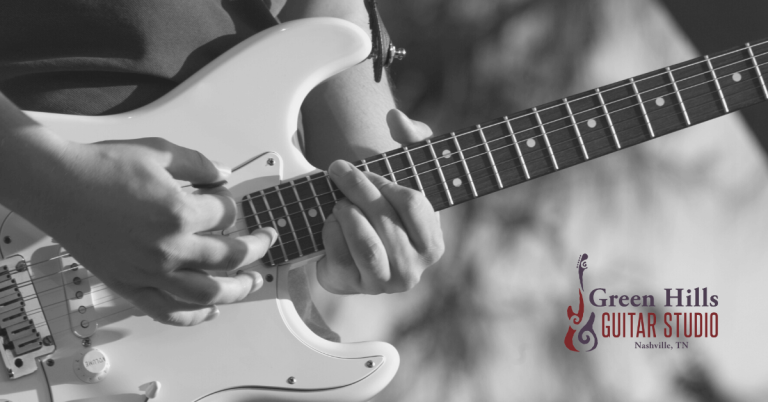The Evolution of Country Music History: A Journey Through Six Generations
“I like my country music at the volume where I can’t hear you complaining about it.”
Regardless of your musical taste, Nashville stands as a vibrant center for both devoted fans and talented musicians immersed in the world of country music. In fact, Music City’s legacy is so cemented in recording history that it bears a unique notation system called the Nashville Number System.
Each year, millions of visitors don their cowboy boots, making a pilgrimage to the city to experience the essence of country music. At the core of this musical landscape is the guitar, an ever-present companion in the evolution of country melodies.
The roots of country music trace back through centuries, with African, European, and Mediterranean immigrants bringing their interpretation of country music, then known as folk music, along with their string instruments to the southeastern United States.
Roots of Country Music – Expanding the Beginning
This cultural amalgamation birthed the distinctive Appalachian music. Given the costliness of guitars during this era, musicians often opted for similar string instruments. As the nation expanded and cultures intertwined, the soulful notes of Appalachian music seamlessly transformed into the heartwarming tunes of country music, with the guitar evolving into an accessible muse for the hardworking communities of the southern United States.
First Generation: A Harmonic Genesis (1920s)
Country music, initially a fusion of blues and folk, found its distinct voice in the 1920s with the iconic Bristol recordings. This marked the birth of the first generation, unveiling a genre that resonated with the hearts of Americans. The steel guitar, with its distinctive twang, became a defining element of this musical era. So much so that open-position guitar chords are often referred to as “cowboy chords.”
As the nation was introduced to country music, record labels began to recognize its potential, catapulting a select group of artists to stardom. The Skillet Lickers, a beloved string band, paved the way, while Vernon Dalhart secured his place as the first country artist with a nationwide hit. Jimmie Rodgers, a trailblazer of this generation, laid the foundation for the country music journey on the horizon.
Second Generation: The Resilience Amidst Hard Times (1930s-1940s)
The Great Depression brought an end to the first generation and birthed the second, marked by a shift in dynamics. Despite high radio listenership, record sales dwindled, giving rise to the electric guitar’s prominence. Gibson’s ES-150 six-string model, introduced in the late ’30s, became a staple for country stars, transforming the musical landscape.
Innovations such as Maybelle Carter’s drop thumb technique and the emergence of subgenres like bluegrass, honky-tonk, and hillbilly boogie enriched the country music palette. This era also witnessed the birth of the legendary Grand Ole Opry, an institution that has stood the test of time and is still an active part of Nashville’s rich musical history.
Third Generation: Country Music Meets the Post-War Era (1940s-1950s)
As World War II concluded and rock ‘n’ roll dawned, the third generation of country music emerged. Influenced by the electrifying sounds of rock ‘n’ roll, artists like Johnny Cash, Patsy Cline, and Jim Reeves ushered in a new musical era. Fender’s introduction of the solid body guitar, particularly the Telecaster, revolutionized the instruments of choice for country musicians.
This period witnessed pivotal moments, including the establishment of the first country music radio station in Texas and the inception of the Country Music Association (CMA) in the late 1950s. The industry was evolving, laying the groundwork for the vibrant future of country music.
Fourth Generation: Outlaws, Icons, and Telecaster Twang (1970s-1980s)
The 1970s marked the zenith of the fourth generation, witnessing the rise of outlaw country music. This rebellious movement, spearheaded by trailblazers like Willie Nelson, John Denver, Ray Price, and Freddie Fender, redefined the country music landscape.
Dolly Parton, with her distinctive voice and unparalleled songwriting skills, rightfully ascended to the throne during this era. The telecaster guitar, maintaining its formidable presence, became an enduring symbol of the genre’s roots, weaving its distinctive twang into the tapestry of country compositions.
Fifth Generation: Radio Waves and Mainstream Triumph (1980s-1990s)
The subsequent fifth generation, unfolding in the 1980s and 1990s, witnessed a seismic shift in popularity. Groundbreaking artists like Garth Brooks, Alan Jackson, and the Dixie Chicks emerged, propelled to stardom by the expanding reach of FM radio networks.
This era marked a golden age, as country music transcended its traditional boundaries, resonating with audiences far and wide. The success of the fifth generation not only cemented country music’s place in the hearts of its traditional fans but also propelled it into the mainstream musical consciousness.
Sixth Generation and Beyond: A Harmonic Fusion (2000s-Present)
Stepping into the sixth generation, country music embarked on a transformative journey, embracing a harmonious fusion influenced heavily by rock and pop. Notable figures such as Darius Rucker, Taylor Swift (in her early foray into country), Carrie Underwood, and Lady A took center stage, shaping the contemporary soundscape.
In this dynamic era of country music history, now a melting pot of diverse musical influences, the genre continues to evolve, captivating a broad and varied audience. As boundaries blur and traditional elements intermingle with contemporary sounds, country music in the present era stands as a testament to its adaptability and enduring appeal.
The Coda: Dive into Country Music History
Our Spotify playlist, ‘Country Through the Times,’ is your ticket to a musical journey. From Appalachian roots to today’s mix of rock and pop, experience six generations of country music.
But the story doesn’t end here. If you’re keen on learning the guitar and want to explore country music’s history, check out Green Hills Guitar Studio in Nashville, TN. We offer private guitar lessons, online or in person, for all skill levels. Whether you’re a beginner or advanced, their expert instructors are here to help.
Discover the evolution of country music and start strumming through the ages. Reach out to Green Hills Guitar Studio now and let the guitar become your guide into the vibrant history of country music.







